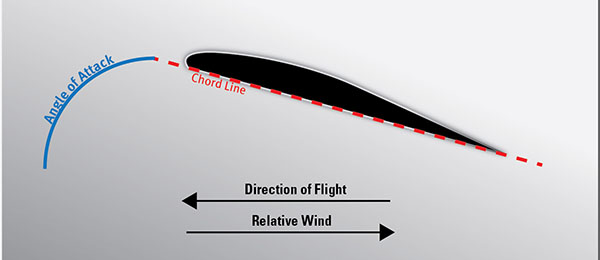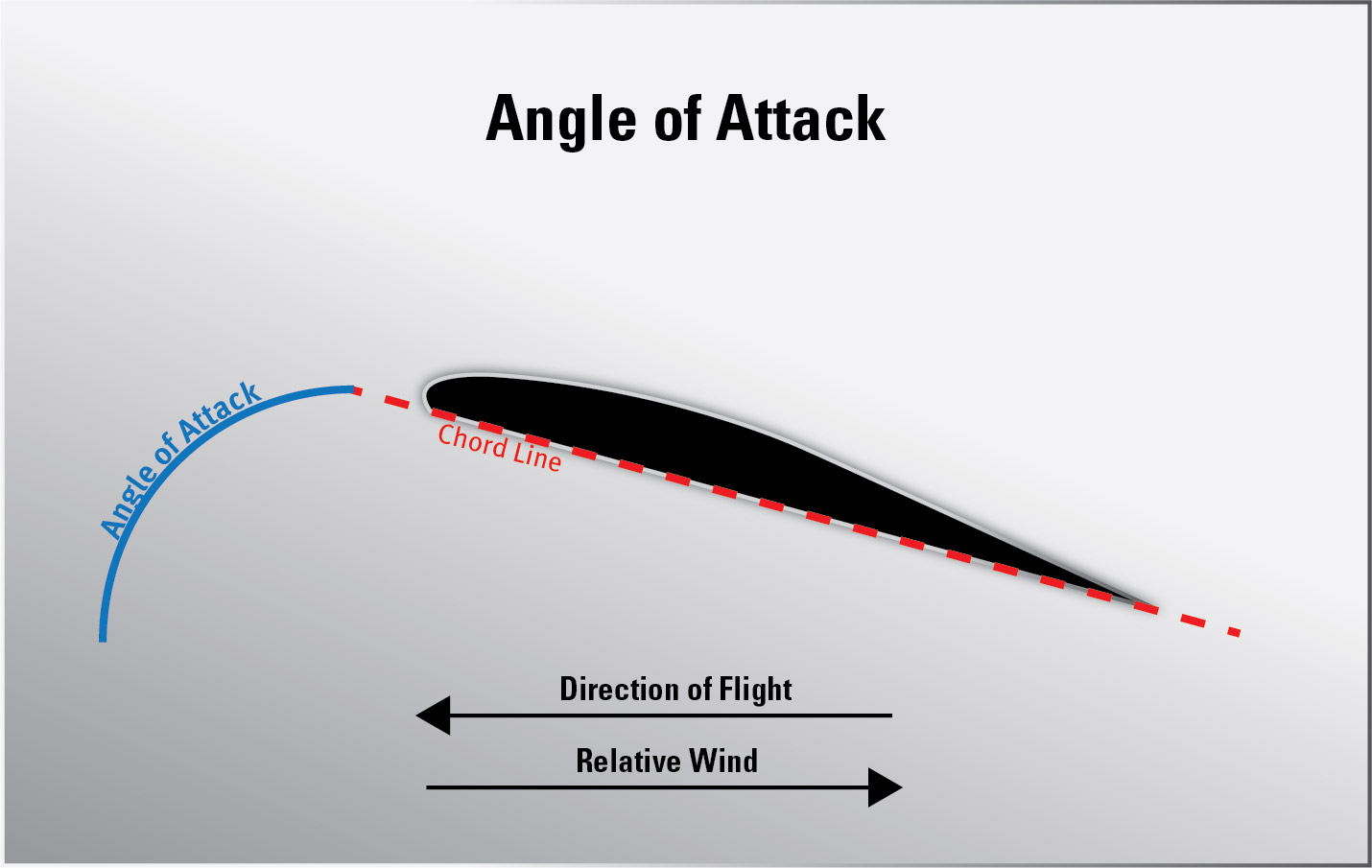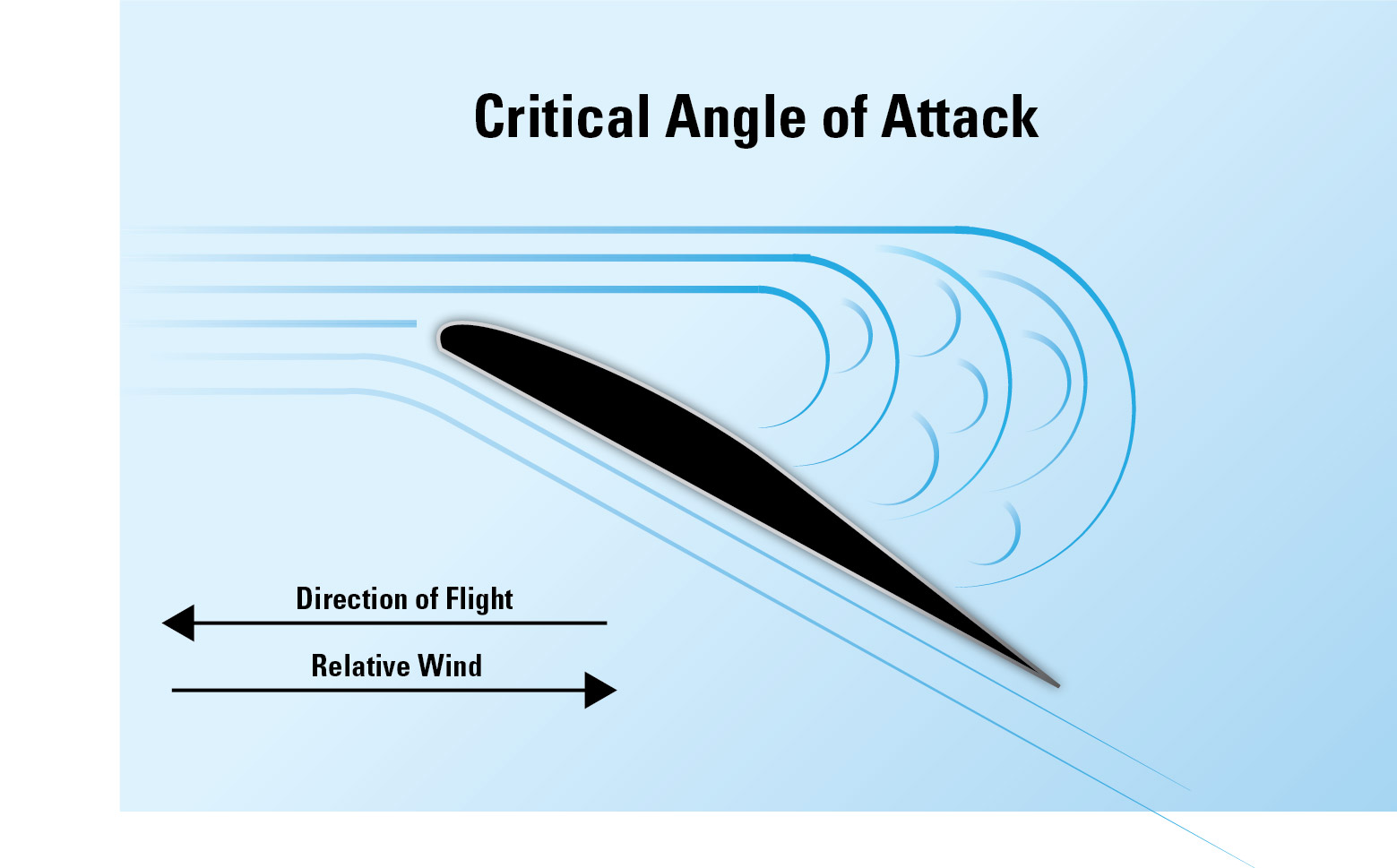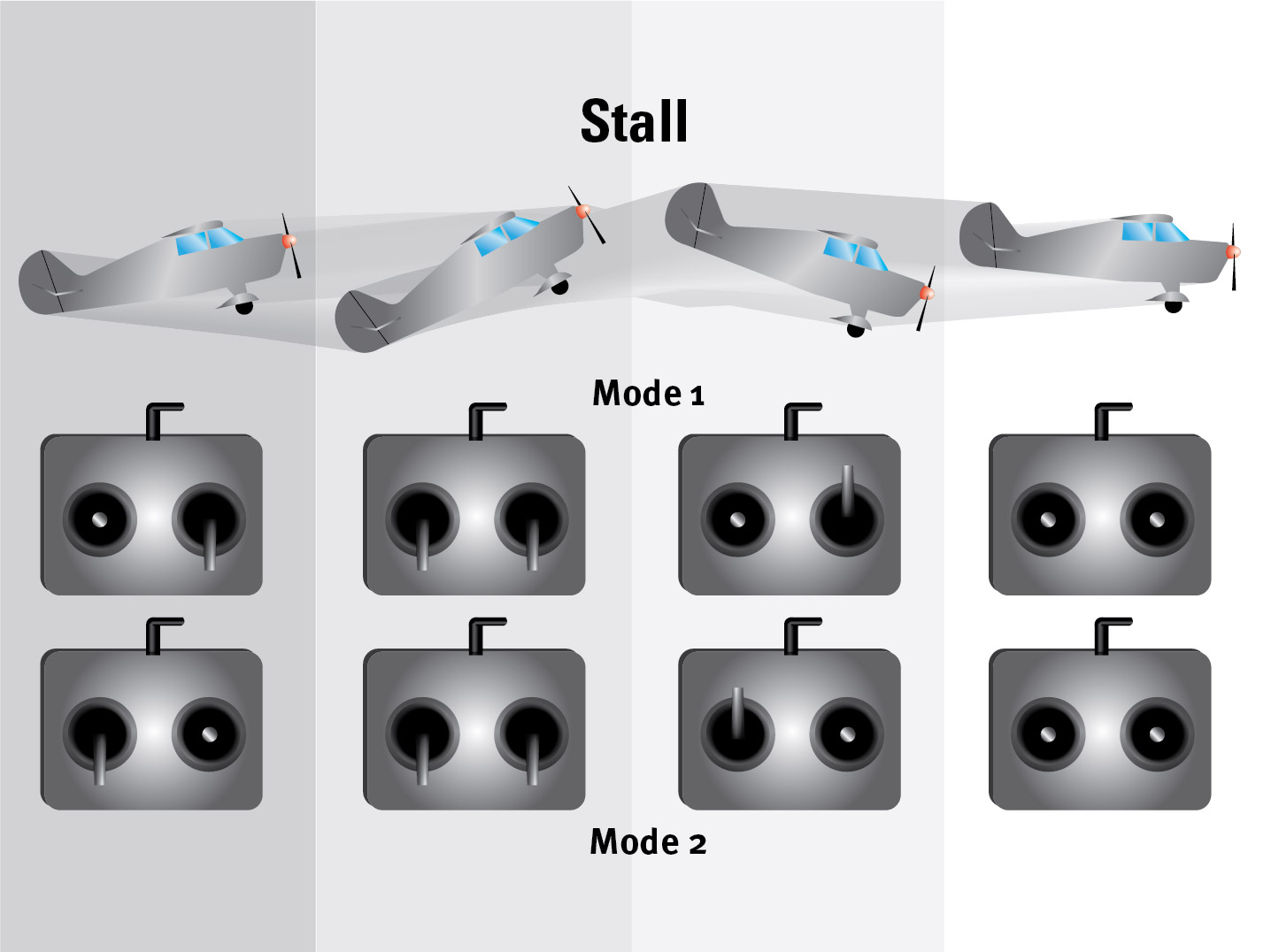Understanding Angle of Attack

Written by Scott Stoops Flight Training Column As seen in the February 2013 issue of Model Aviation.
On a trip with family and friends to Mexico, we were lucky enough to end up in the last row of coach for the four-hour flight. Sitting across the aisle from a family friend, he queried as to why it seemed as though we were severely tilted nose-up, even in cruise flight. In my typical wordy fashion, I proceeded to outline the basics of flight and specifically the angle of attack (AOA). Seeing his eyes glaze over after a minute or so, I decided that this column would make a better vehicle for that discussion. Let’s explore AOA, some common misunderstandings new pilots have about stalls, and some common recovery techniques. Let’s start from the beginning. Wings create lift. They do this primarily by manipulating the AOA. AOA is the difference between the chord line and the flight path or relative wind of a wing. Not unlike sticking your hand out the window of a car with it tilted slightly up, a wing creates down force through both its shape, but primarily, the angle it addresses the oncoming air. This is AOA (see Figure 1).

Although the basic shape of the airfoil contributes to the efficiency of the wing and its ability to create lift, the primary factor in lift creation is AOA. Based on the design of the wing and airfoil section, there is a maximum AOA at which the wing section will continue to produce lift. Flight beyond that AOA causes the airflow to become extremely turbulent and detach from the upper surface of the wing. This detachment results in a loss of lift, or a stall. The specific stalling AOA is a constant for that particular wing. Stalls have absolutely nothing to do with a power failure of the motor or engine. In fact, unpowered aircraft such as sailplanes can also stall. Stall is an aerodynamic term that only relates to exceeding the critical AOA. During normal flight in most types of airplanes, we avoid flying the aircraft at or close to the critical AOA. It is, however, important to be familiar with the stalling characteristics of your model. Learning to stall your model allows a higher level of awareness of the energy state of the airplane with regard to AOA. Practice is the only way to become familiar with and competent at stall and recovery. For the airplane to stall, an AOA that exceeds the critical AOA must exist (see Figure 2). In the case of practicing stalls, the best place to start is from level flight with plenty of recovery altitude. You can intentionally stall the aircraft by increasing the elevator input and holding it in an increasing pitch attitude while reducing the power of the motor.

As the aircraft exceeds the critical AOA, airflow over the wing will “detach” from the wing’s upper surface, causing some buffeting and usually a pronounced pitching moment toward a nose-down attitude. Most models have a critical AOA of approximately 17°. Recovery is simple, but not instinctive. With the nose now pointing slightly down (probably below the horizon), you must reduce the up-elevator input to let the wing recover to a flying AOA. This is not instinctive, because in normal flight we would apply up-elevator when the nose is below the horizon to correct for level flight. In stalled flight, it is critical to allow the wing to start flying again by lowering the AOA even further. Often, simply releasing any elevator input back to neutral is enough to get the recovery started. This reduction in AOA generally coincides with an increase in thrust and, once the wing is no longer stalled, a gentle correction back to level flight.
Stalls in All Attitudes
Now for the confusing part! The previous example was for level, decelerating flight. Stalls occur when the critical AOA is exceeded, which means they can occur in any pitch attitude. A stall can occur when the aircraft is pointing straight up, straight down, inverted, or at any pitch attitude as long as the critical AOA is exceeded. This is generally tied to a large elevator input, but can also occur with small inputs at higher speeds. A stall can occur at any airspeed (it is not necessarily a slow speed event, but rather, a high AOA event). This can be confusing to new modelers, because the traditional diagrams of the stalling AOA depict an aircraft in level flight as I have explained. A model can be stalled going straight up in a loop. If the pilot pulls too hard on the elevator control stick (displacing the elevator up), the critical AOA can be exceeded and the wing will stall while the airplane is pointing straight up. The same is true if the pilot pulls too hard on the elevator during the backside of a loop while pointing straight down. A good indicator that the model’s AOA is near the critical AOA is the position of the elevator. For the AOA to be high, the elevator has to be significantly displaced. So, wings stall at a specific AOA, not at a specific pitch attitude (see Figure 3).










9 comments
Stall Maneuvers
Angle of Attack at any Attitude and Speed
aircraft "stall" definitions
You should not include the
AOA
stalls
Stalls
The Bernoulli Effect and Lift
AOA as it relates to a stalled wing
Add new comment